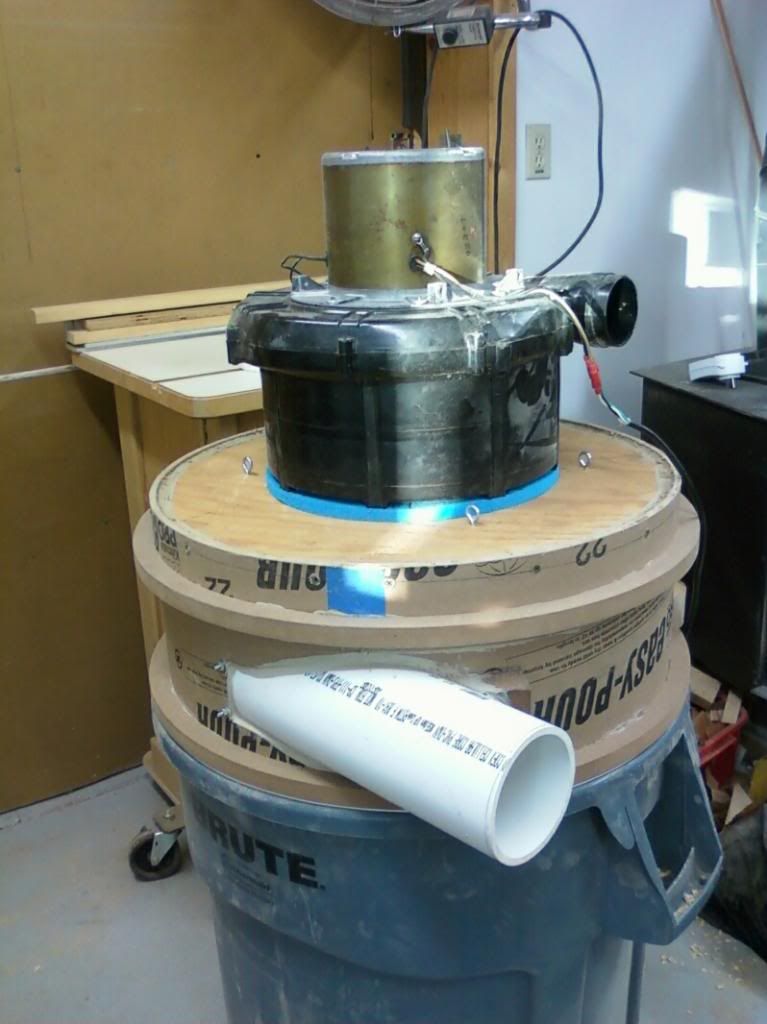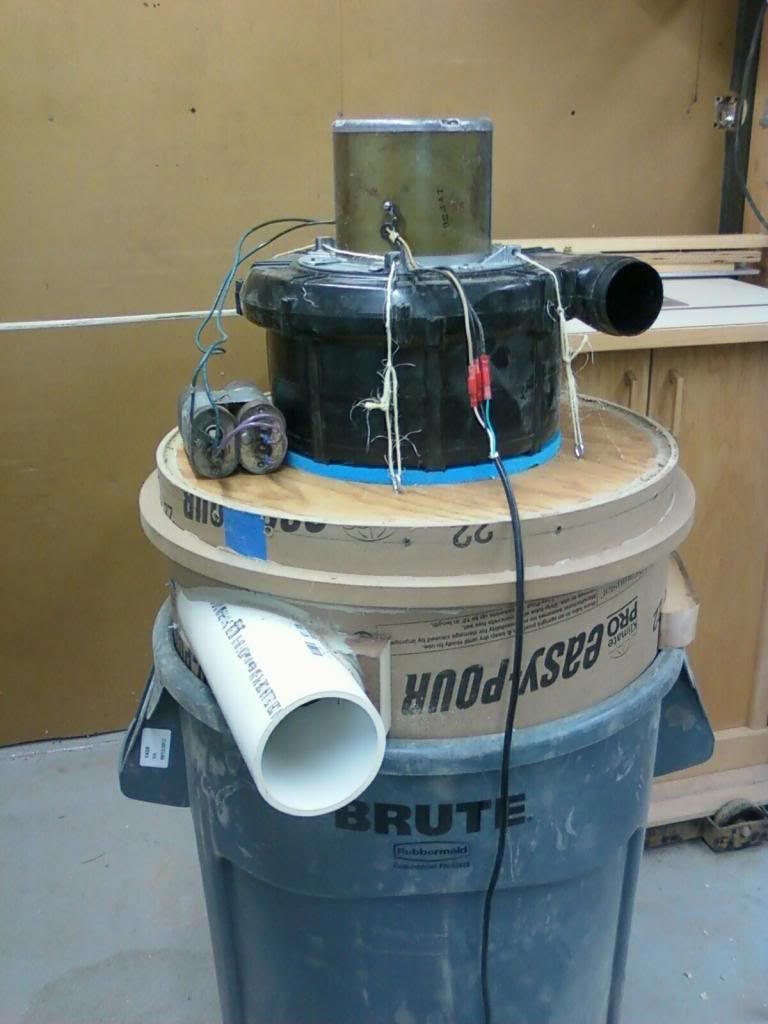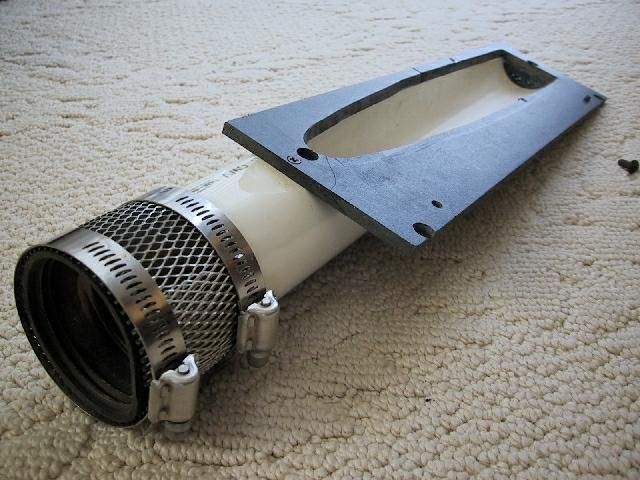I'm a little late to the party but I'll post just to add a materials option. I made the chamber sides from a 12" long piece of a 22" diameter concrete form. A local concrete & stone supply sold it to me for about $6, it's nearly 1/4" thick and easy to work with. I had to slit it up the side and remove about 1/2" in order to reduce the diameter just a tad. A different drum or a different brand of form might result in a slip fit--YMMV.
Top & bottom are 1/2" ply, top glued & sealed with OSI Quad caulk, 3/4" screws every few inches around the perimeter. I used threaded rod spacers--I didn't trust the bottom only held along 1/3 of its circumference.
I initially wanted the "cool" factor of a clear poly chamber but in the end didn't want to deal with the hassles of taking something thin & flat & forming it round.

Top & bottom are 1/2" ply, top glued & sealed with OSI Quad caulk, 3/4" screws every few inches around the perimeter. I used threaded rod spacers--I didn't trust the bottom only held along 1/3 of its circumference.
I initially wanted the "cool" factor of a clear poly chamber but in the end didn't want to deal with the hassles of taking something thin & flat & forming it round.




